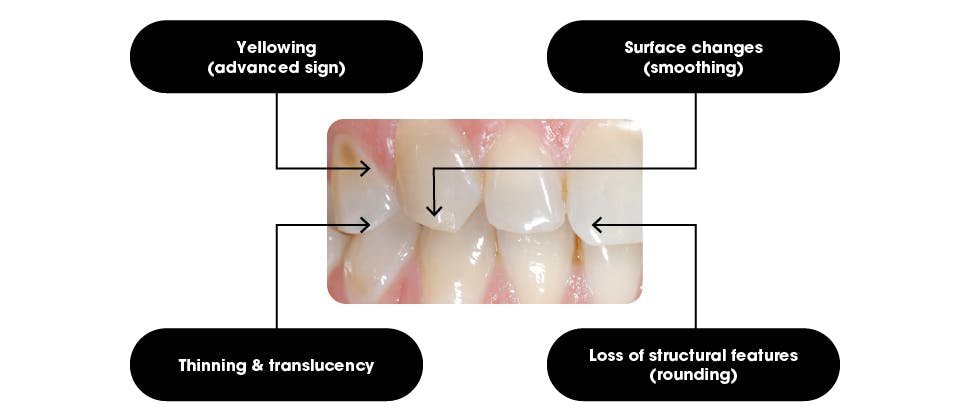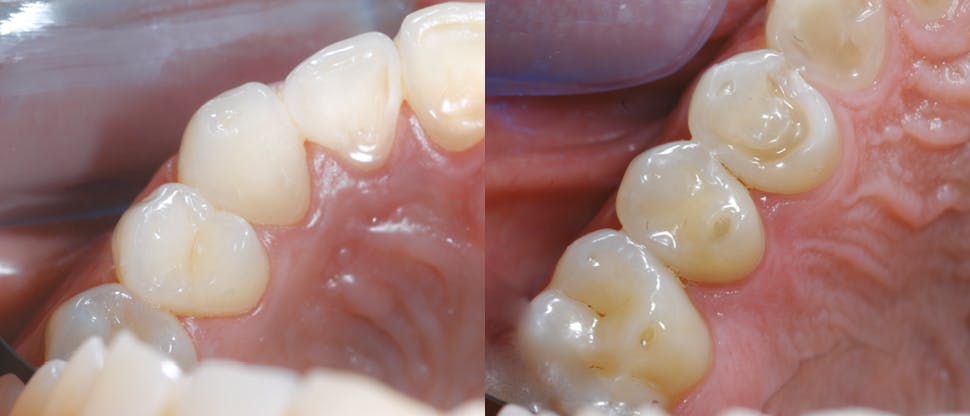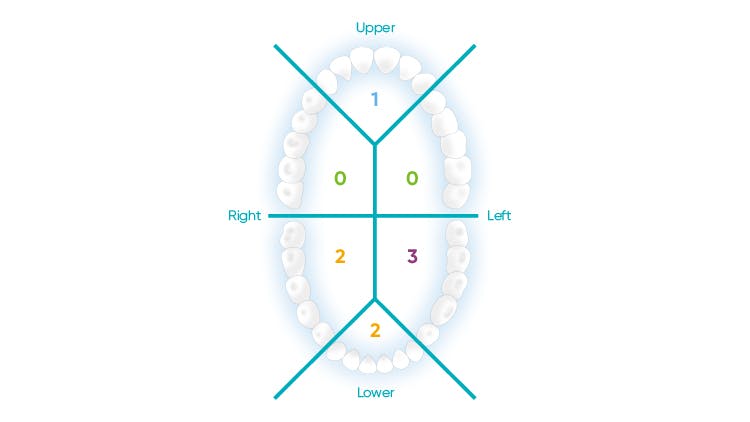Diagnosing Erosive Tooth Wear

How to diagnose erosive tooth wear
Erosive tooth wear is gradual and can be hard to detect during the early stages.1 Explore the tools that can help you identify erosive tooth wear.
Early diagnosis of erosive tooth wear is important to prevent further, lasting damage2

Common features of erosive tooth wear3,4
These include:
- Yellowing (advanced sign)
- Thinning and translucency
- Surface changes (smoothing)
- Loss of structural features (rounding)

Other signs of erosive tooth wear4
These include:
- Palatal erosive tooth wear
- Occlusal cupping5
The Basic Erosive Wear Examination (BEWE)
The BEWE is a quick, effective, validated tool for assessing erosive tooth wear.6 It is recommended in the latest UK Department of Health oral healthcare guidelines,7 and was a key tool in the ESCARCEL study; the first pan-European epidemiology study on non-carious cervical lesions (NCCL) and associated risk factors, and the largest and most comprehensive study of its kind.8
Professor David Bartlett discusses the BEWE tool
Learn how to use the BEWE tool in practice from Professor David Bartlett at King’s College London Dental Institute.
The BEWE in practice
Read more on Erosive tooth wear
Causes and mechanisms
Find out about the causes and mechanisms behind erosive tooth wear.
Impact on patient quality of life
Find out about the impact erosive tooth wear has on patients’ daily lives.


